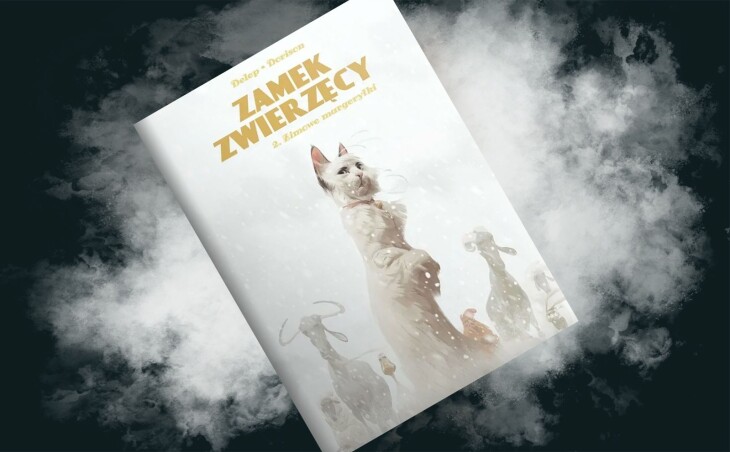Xavier Dorison set a very bold goal in the Animal Castle . He took one of George Orwell’s most important works, Animal Farm , and decided to rewrite it, adding new contexts. The French screenwriter was not interested in the birth of the dictatorship, but in the attempts to overthrow it.
The original farm was finally ruled by pigs, who, thanks to their manipulations, were able to subjugate the rest. After all, “all animals are equal, but some animals are more equal than others.” In the Castle , the dictatorship has a more classical dimension. The Silvio Taurus rules not because of his cunning or manipulation, but because he is simply the biggest and strongest. Dogs acting as a kind of police help him to maintain the regime.
It’s snowing
The first volume of the Animal Castle showed the harsh conditions in which the animals had to live. The first attempts to resist slave labor ended in a bloody slaughter. In winter daisies , animals are even harder than before. Winter has come, and with it food shortages and a chill. The inhabitants of the castle have to work slavishly in order to be able to later buy some firewood for heating at draconian prices. In such conditions, any attempts to rebel are even more difficult to carry out, but this does not discourage the main character, Miss Bangalore, from organizing resistance.
The dictatorship is falling
If anyone expected a bloody creation of animals, Dorison is not interested in this approach. Instead, the screenwriter seems to be a fan of Velvet Revolutions and the way of Mahatma Gandhi. Miss Bangalore does not get her paws dirty, but urges all other animals to passively resist: all of them are to continue to do their jobs, but refuse to participate in the unjust system and not buy firewood. This road is full of toil and suffering, but according to the protagonist, it is supposed to lead to the collapse of the dictatorship. Of course, history shows that such peaceful methods can break walls, but for Dorison it sounds a little naive. The conditions in the castle are so difficult that it is hard to imagine that other animals would accept further sacrifices, and yet it does so in the plot. Although I will admit right away,
Not laughing
In his polemic with Orwell, Dorison has almost completely lost one aspect that distinguishes the original: humor. Orwell’s novel is timeless because it is a political satire that accurately points to the mechanisms of power. There are funny moments in the comic by the French screenwriter, but they are related to situational jokes or the construction of the characters (here, the giant rabbit, Caesar, is in the lead). On the other hand, the topic of the rebellion itself was taken seriously, thus losing its claw.
Almost like Disney
The graphic layer remains excellent. Felix Delep has an amazing talent for drawing animals. The more he deserves the recognition that in animals it is harder to find appropriate facial expressions reflecting the emotions of the characters, and here the artist has chosen a great choice and the expression of the characters is flawless. In terms of color, the second volume is a bit worse than its predecessor, although in this case it is caused by the winter color palette, which is naturally poorer.
Long live the revolution !
The second volume of the Animal Castle does not introduce any revolution ( pun intended ). In a duel with Orwell, Dorison still loses halfway through his story. Shifting the story vector to the birth of the rebellion is an interesting idea, although it has not been carried out in a satisfactory way. Attempts to overthrow the regime are based on very idealistic and banal assumptions. However, when this comparison with the original (to which Dorison himself did lead) is abandoned, Animal Castle remains a beautifully drawn tale about the hardships of the Velvet Revolution. Even if not for the plot, it is worth reaching for the comic because of the graphic layer.
Nasza ocena: 7.5/10
Xavier Dorison's polemics with George Orwell continued. As naive as beautifully drawn.PLOT: 6/10
Characters: 6/10
GRAPHIC DESIGN: 10/10
EDITION: 8/10

